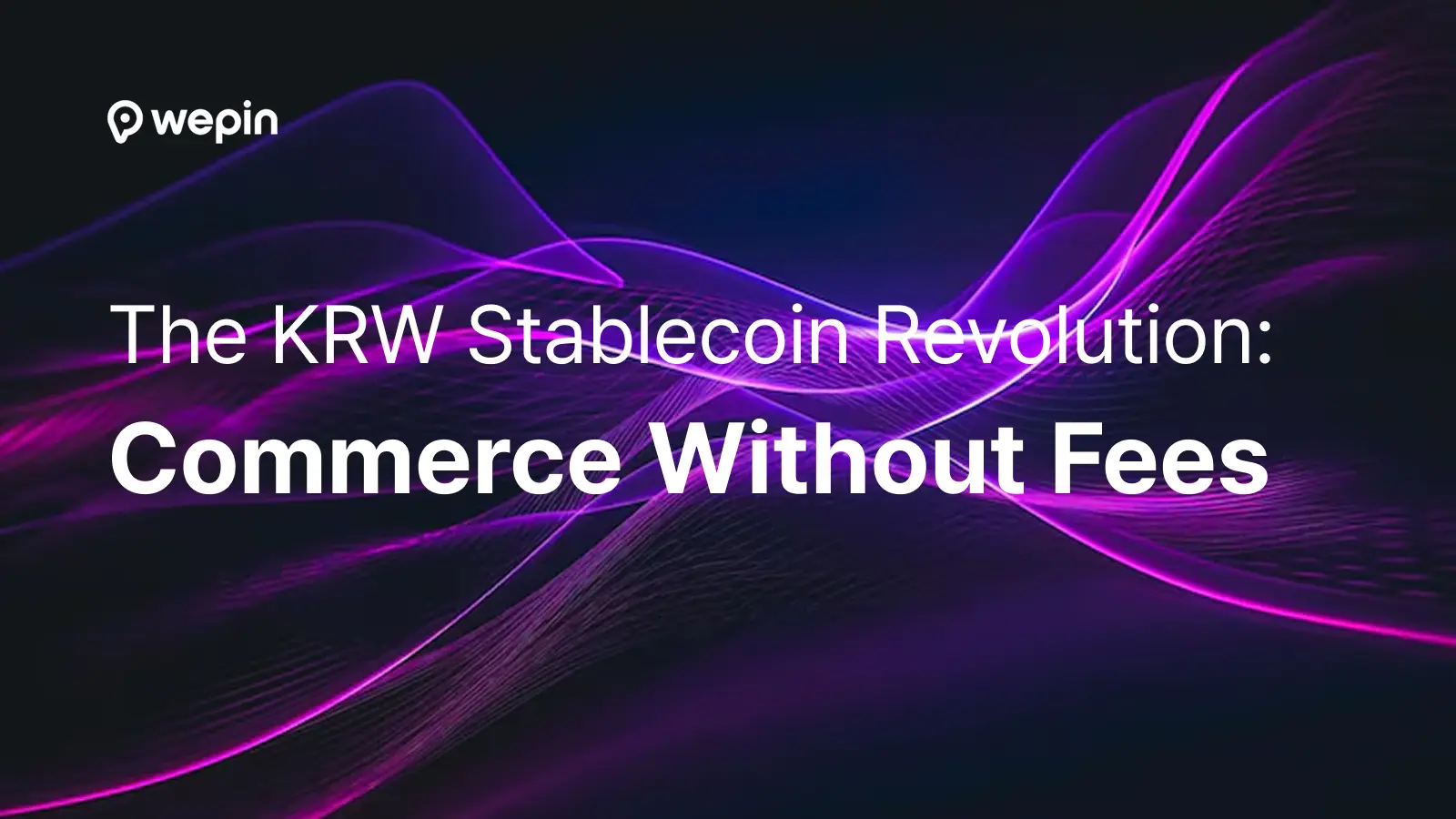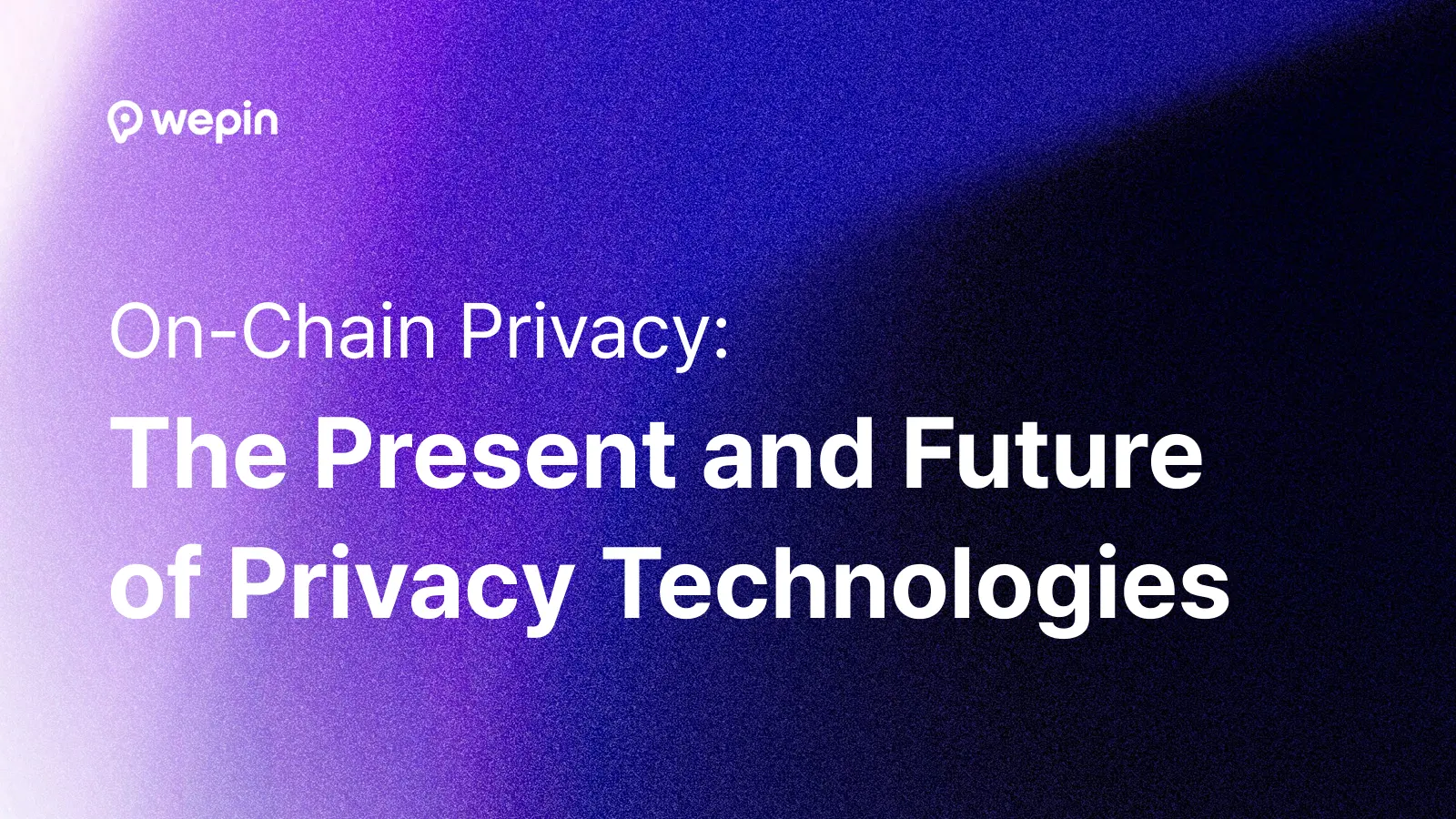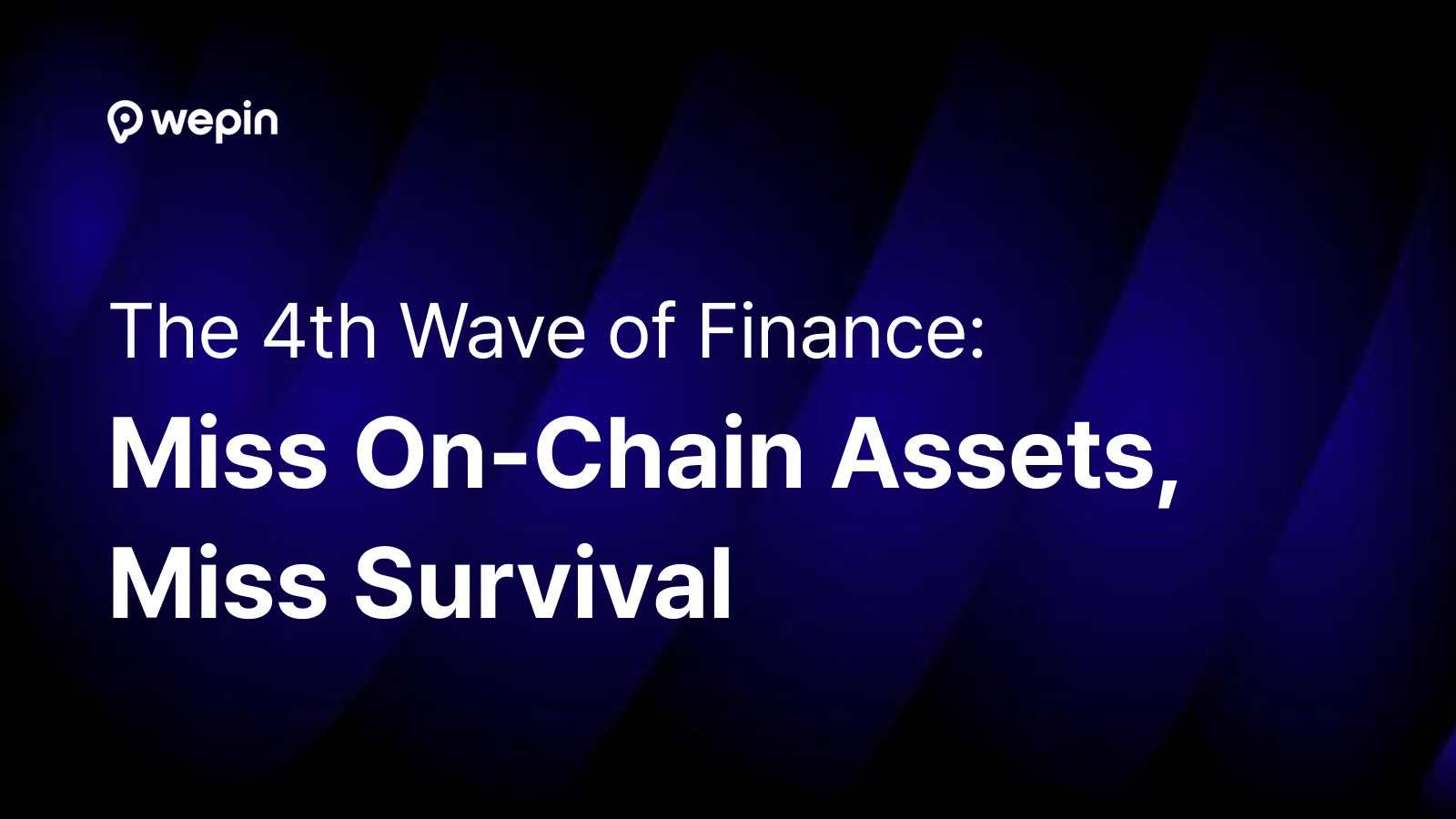[TL;DR]
- Today, small business owners pay 2–3% of their annual revenue in card fees, while also suffering from structural inequalities caused by dependence on payment providers and the lack of ownership over transaction data.
- KRW stablecoins maintain a 1:1 value with the Korean won while enabling a payment revolution through zero-fee instant settlements, transparent transaction records, and cross-platform compatibility.
- By resolving technical complexities through WaaS (Wallet-as-a-Service) infrastructure and establishing cooperative models with traditional financial institutions, Korea can build a foundation to emerge as a global digital economy leader centered around the Korean won.
1. Limitations of the Current Payment System: The True Cost to Small Businesses
1.1. Disappearing Millions: The Reality of Card Fees and Intermediary Charges
Did you know that even a café owner earning 10 million KRW in monthly revenue could see years of hard work wiped out overnight, all depending on the policies of a payment service provider? One of the most alarming realities is that a sudden halt in service or an increase in transaction fees can entirely erode business profitability.
When large domestic payment processors adjust their fees for existing merchants in response to market shifts, the POS systems and payment infrastructure that small businesses have invested in turn into liabilities. A store owner who has spent millions of won over three years to build a seamless in-store payment system for customer convenience may see it all lose value and profitability due to a single policy change.
Such total loss of profit doesn’t happen only in extreme cases like service shutdowns. Even a small percentage point increase in transaction fees—say, from 2.0% to 2.5%—can amount to hundreds of thousands of won in additional costs each month. For small merchants, that’s not just a number—it’s rent, salaries, and raw materials.
What’s worse is that merchants have little say in these decisions. Fee structures are dictated by the payment companies, and merchants must either comply or go through the costly and time-consuming process of switching providers, which often involves replacing hardware and retraining staff.
In the end, what appears to be a minor percentage point in fees is actually the margin between profit and loss for many small business owners. And that thin margin is constantly under threat in the current payment landscape.
1.2. Loss of Data Sovereignty: The Flow of Information Unknown to Both Users and Merchants
In the current payment ecosystem, small merchants are not just losing money—they are also losing access to and control over transaction data. Payment processors and card companies sit at the center of the system, accumulating vast amounts of data on who buys what, when, and how often. Meanwhile, the merchants and customers who generate this data remain in the dark.
For merchants, this lack of data ownership means they cannot analyze customer behavior in detail or use it to improve marketing and service. While large platforms run targeted campaigns using refined customer profiles, small businesses are left with basic sales numbers and no insight into purchasing patterns.
For consumers, the problem is equally serious. Most people are unaware of how their payment information is used, shared, or even sold. Transaction data is often handled by multiple intermediaries, and there is rarely transparency about where this information goes or how it’s utilized.
In other words, the value generated by individual purchases and sales is being extracted by intermediaries, leaving both the buyer and seller without the ability to leverage their own data.
This imbalance is not just a privacy issue—it’s an economic one. Data has value, and under the current system, that value is captured almost entirely by third parties. Restoring sovereignty over transaction data to both users and merchants is essential for building a fairer and more sustainable payment infrastructure.
1.3. A Closed Ecosystem and the Breakdown of Innovation
The payment infrastructure most merchants rely on today is built as a closed-loop ecosystem. From payment terminals and software to settlement services and data systems, everything is vertically integrated by a handful of dominant companies. This structure leaves little room for innovation.
Even when new, more efficient solutions emerge—such as lower-fee alternatives, better POS software, or advanced customer data analytics tools—merchants find it nearly impossible to adopt them. Integration with existing payment systems is restricted, and many services operate under exclusive contracts that prohibit outside tools or systems from entering.
As a result, the ecosystem becomes technologically stagnant. Developers and startups are discouraged from building better tools because they have no clear pathway to reach merchants. The barrier to entry is too high, and the incentive to innovate is too low.
This isolation not only harms merchants and service providers but also delays the evolution of the payment industry itself. While global commerce rapidly shifts toward open, modular systems driven by APIs and interoperability, Korea’s payment landscape remains trapped in a rigid, legacy structure.
True innovation requires openness. Without it, small business owners continue to bear the cost of inefficiency, while the broader digital economy loses its momentum.
1.4. The Trap of Payment Provider Dependence: A Digital Payment Ecosystem Without Choice
The issue of dependence on payment providers becomes even more serious in the digital payment ecosystem. Small merchants can only process digital payments within the platforms operated by the payment companies, and since all payment providers maintain similar centralized structures, their choices are extremely limited.
It is technically and administratively impossible for merchants to transfer sales data to another payment provider or to transact directly with customers without going through a provider. These constraints are further worsened by the lack of system compatibility between different payment companies. A POS system built with Provider A cannot be used with Provider B. Even for the same type of card payment, completely different fee structures and settlement systems are applied.
To switch to a new payment provider, a small business must abandon all previous investments and build a new system from scratch. This dilemma is compounded by their lack of control over sales data and customer information. Small merchants cannot modify the data policies or privacy terms set by payment companies. Even when terminating a service or attempting to transfer data, they remain reliant on the provider’s policies.
Even sales data that merchants have rightfully accumulated can become inaccessible at any time due to a change in policy or a system error by the payment provider. This unstable structure stems from the centralized storage of payment data. All data—such as sales records, customer payment patterns, and product-level sales performance—is stored solely on the payment provider’s servers, out of the merchant’s control.
If the payment provider discontinues service or encounters a server issue, the small business may lose access to its own business history overnight.
2. The Potential of KRW-Backed Stablecoins: A Game Changer for Payment Systems
2.1. What Is a KRW-Backed Stablecoin?
A KRW-backed stablecoin is a digital currency pegged 1:1 to the South Korean won. It is designed to maintain price stability while leveraging the advantages of blockchain technology—such as decentralization, transparency, and programmability.
Unlike volatile cryptocurrencies, KRW stablecoins maintain consistent value, making them ideal for everyday transactions. They are usually issued by trusted entities and backed by real fiat reserves held in banks or regulated custodians.
2.2. Zero Transaction Fees and Instant Settlement
Stablecoin-based payments can dramatically reduce costs. Traditional credit card systems involve multiple intermediaries—issuers, acquirers, payment gateways—all of whom take a cut. This often results in merchants paying 2–3% in fees.
With KRW stablecoins, payments are made directly from the buyer’s wallet to the seller’s wallet. There are no middlemen, meaning zero transaction fees and real-time settlement. This is especially beneficial for small merchants with tight margins and cash flow constraints.
2.3. Transparent Records and Reduced Risk
All transactions using stablecoins are recorded on the blockchain, providing a transparent, immutable ledger that anyone can audit. This transparency reduces the potential for fraud, unauthorized chargebacks, and accounting discrepancies.
Moreover, having access to this data can empower both merchants and consumers. Merchants can simplify their reconciliation and tax reporting processes, while consumers can trace their payments and be more informed about how their money is used.
2.4. Cross-Platform Compatibility
KRW stablecoins are interoperable across platforms, from e-commerce sites and mobile payment apps to decentralized finance (DeFi) and Web3 services. This cross-compatibility makes it easier to build flexible, future-proof payment solutions.
For instance, a merchant can accept payments via a Web3 wallet on their e-commerce site, then use the same stablecoins to pay suppliers, access financial services, or even integrate with loyalty programs—all without currency conversion or complex integration.
This flexibility paves the way for an open payment ecosystem, where innovation is not limited by infrastructure and businesses are free to choose the tools that work best for them.
3. New Opportunities for Small Merchants: A New Infrastructure for Mutual Growth
3.1. Lowering Technical Barriers Through WaaS
For small merchants, adopting new digital infrastructure often comes with a high technical learning curve. While KRW stablecoins promise major advantages—such as cost reduction and real-time settlement—most business owners don’t have the resources or expertise to directly adopt blockchain technology.
This is where Wallet-as-a-Service (WaaS) platforms become crucial. WaaS provides pre-built tools that allow businesses to use blockchain-based services—like payments, identity verification, or loyalty programs—without needing deep technical knowledge.
Just like how no-code website builders lowered the barrier to online commerce, WaaS can simplify stablecoin integration, making Web3 services accessible through familiar interfaces. Small businesses can enjoy the benefits of digital currency without being burdened by complex wallet setups or blockchain jargon.
3.2. Working with Traditional Financial Institutions
Adopting KRW stablecoins doesn’t mean cutting ties with the existing financial system. Rather, it opens the door for collaboration. Banks and fintech companies can take part in issuing or managing stablecoins, while merchants can use these assets without abandoning their current bank accounts or tax processes.
By designing infrastructure that supports both fiat and stablecoin settlements, we can ensure a smoother transition. Regulatory clarity and technical standardization will also help ensure trust and security across all participants—whether it’s a coffee shop owner or a commercial bank.
Ultimately, this is not a zero-sum game. A cooperative model, where traditional finance and Web3 coexist, will yield the greatest benefits for everyone involved.
3.3. Innovation in Micro-Payments: Overcoming Traditional Limitations
The true innovation of KRW-based stablecoins in micro-payments lies in their ability to overcome the limitations of existing systems. Currently, transactions under 1,000 KRW are practically unfeasible due to card processing fees. However, with KRW stablecoins, real micro-transactions—such as 100 or 500 KRW—become possible without any fees.
This is especially transformative for the digital content market. Users could purchase a single episode of a webtoon for 100 KRW or a song for 200 KRW without incurring any fee burden, opening up more diverse revenue models for creators. Services that previously relied solely on monthly subscriptions can now adopt a pay-per-item micro-payment model.
Vending machines and unmanned stores will also benefit. Products priced below 1,000 KRW, which were previously cash-only due to card fees, can now be sold via digital payments using KRW stablecoins—enabling fully unmanned operation.
Even casual reimbursements between friends will be simplified, resolving the inconvenience of cash transfers. While services like Toss or Kakao Pay may incur fees or require complex authentication for small transfers, KRW stablecoins enable instant, fee-free transfers, making everyday settlements much more convenient.
Ultimately, KRW stablecoins address key issues in existing payment systems across various commerce sectors, offering small merchants stable sales management without fee burdens, and providing customers with a more convenient and transparent payment experience. This shift goes beyond simple payment upgrades and lays the groundwork for innovation in the economic structure itself.
4. Infrastructure Behind the Payment Revolution: The WaaS Ecosystem
4.1. Wallet-as-a-Service: The Invisible Foundation for Payments
No matter how innovative KRW stablecoins may be, their widespread adoption would be impossible if small business owners were required to manage complex blockchain wallets or store private keys themselves. This is where Wallet-as-a-Service (WaaS) emerges as the essential infrastructure powering the KRW stablecoin payment revolution. WaaS completely hides the technical complexity of KRW stablecoins, while providing an environment where small business owners can naturally adopt KRW-based digital payments.
The most notable change is the ability to instantly create a KRW stablecoin wallet via social login. A small business owner can simply log in using their Naver or Kakao account, and in the background, a KRW stablecoin wallet is automatically created, fully connected to the Korean financial system and ready for use.
If someone opens a new café and wants to accept KRW stablecoin payments, they only need to click a “Start Payment” button to immediately begin receiving payments from customers. All the complicated processes—like wallet configuration or blockchain network selection—are handled automatically by WaaS, giving business owners a level of convenience equivalent to setting up traditional card payments.
What makes WaaS especially powerful is that this convenience does not compromise security. It uses advanced encryption to securely store private keys, while also offering multi-signature and biometric authentication that complies with Korean financial authorities' security standards. At the same time, integration with social accounts ensures a user-friendly onboarding process, enabling anyone to easily manage a blockchain wallet and use it in real-life commerce.
4.2. Developer Toolkit: Easy Integration into Commerce
Another core element of the WaaS ecosystem is its developer-friendly toolkit that enables various commerce platforms and payment services to integrate KRW stablecoin payments with just a few lines of code.
For example, an online shopping mall solution provider can integrate KRW stablecoin payments across all their merchants simply by adding the WaaS SDK. Franchise headquarters or POS system vendors can add stablecoin payment options without developing blockchain infrastructure from scratch. This means commerce providers can adopt blockchain payments just as easily as they integrate with traditional card companies.
This allows KRW stablecoins to naturally expand into diverse real-world commerce use cases—not by replacing existing providers, but by being layered into them. WaaS plays the role of making blockchain payments invisible to both developers and users.
4.3. Connecting On-chain and Off-chain: Expanding into Real Economy
Lastly, WaaS acts as a bridge between the blockchain world (on-chain) and the real-world economy (off-chain).
WaaS integrates directly with existing KRW deposit and withdrawal systems, making it possible to link stablecoins to traditional financial accounts in a secure and regulatory-compliant way. As a result, small business owners can seamlessly convert between KRW stablecoins and fiat KRW, while ensuring that taxation and compliance are fully met.
In addition, WaaS enables the recording of payment transaction data on-chain, creating an environment where real-world economic activity and blockchain networks are connected. This expands the utility of on-chain data, allowing new financial services such as credit scoring based on on-chain payment records, and opens the possibility of offering business loans and insurance tailored to small merchants.
Ultimately, WaaS becomes a comprehensive infrastructure that supports the entire KRW stablecoin payment ecosystem, covering both technical needs (like wallet security and blockchain integration) and commercial use cases (like commerce plugins and data services). It is the invisible but essential foundation behind the next generation of payments.
5. Prepare for the Era Beyond 0% Transaction Fees
5.1. Zero Fees Are Just the Beginning
Eliminating payment fees is a massive shift—but it's not the end goal. What really matters is who controls the data, who controls the financial flow, and who benefits. In today's centralized payment systems, that power belongs to a few large institutions. In a stablecoin-powered ecosystem, it can return to merchants and users.
Programmable money means payments can include logic—like instantly splitting a transaction for tax, profit sharing, or donations. These were not possible with traditional finance rails. It enables innovation not just in how we pay, but in how value is created and distributed.
5.2. Building a Sustainable Digital Economy
For this new economy to last, several conditions must be met:
- A stable issuance and redemption framework for KRW stablecoins
- Legal clarity on taxation and accounting
- A digital identity system that protects privacy while ensuring compliance
This is where cooperation between the private sector and regulators becomes essential. If businesses, tech providers, and policymakers work together, Korea can lead the world in crafting a fair and efficient digital commerce ecosystem.
5.3. From Korea to the World
Korea has one of the most sophisticated payment markets, high smartphone adoption, and a strong base of tech-savvy consumers. These are ideal conditions for pioneering stablecoin-based payment systems.
If we build this right—not as a disruption, but as an evolution—KRW stablecoins can become a blueprint for other economies looking to transition into digital-first commerce models. What starts as a zero-fee payment option for Korean merchants may soon become the global standard for digital transactions.











